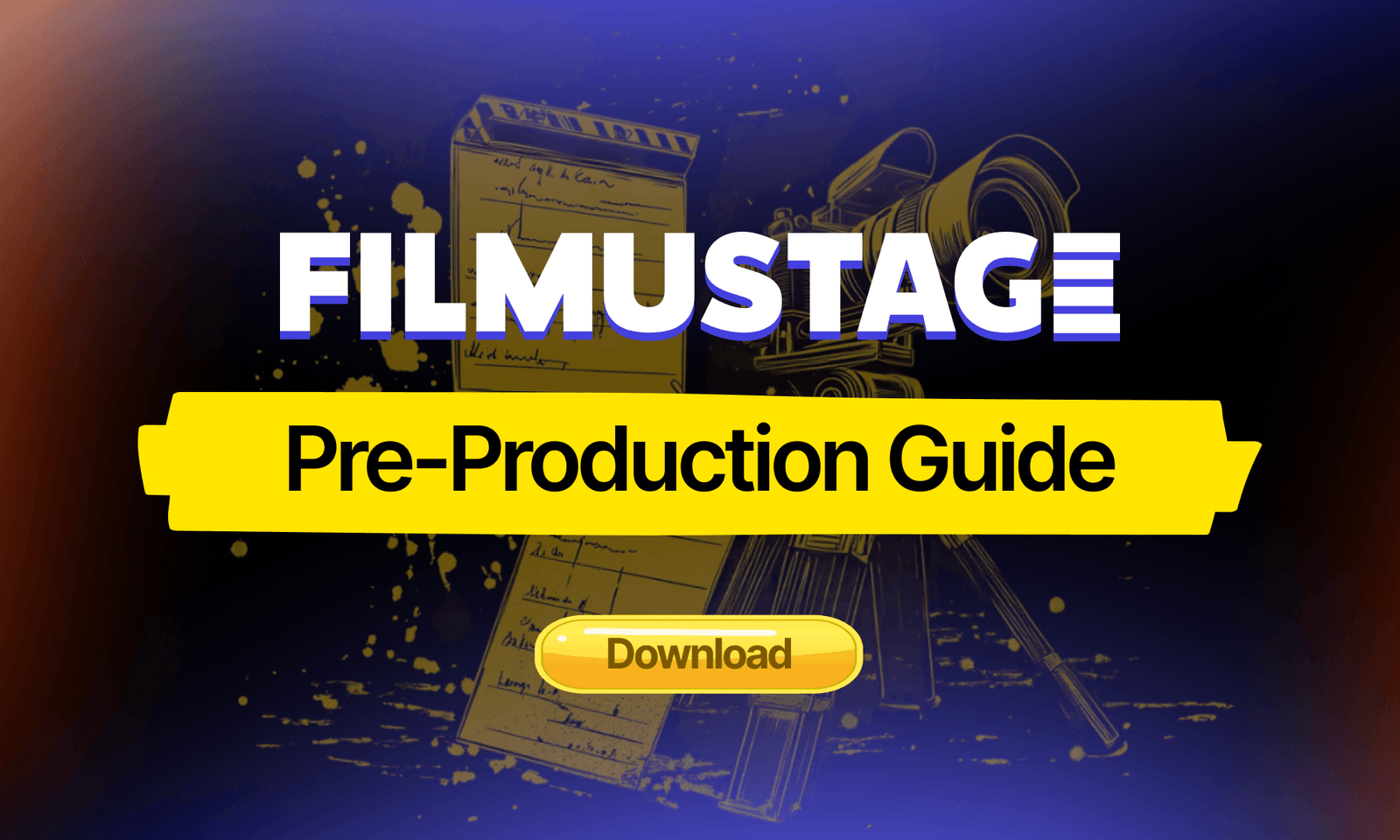The Ultimate Pre-Production Guide: Step-by-Step Planning for Filmmakers
Pre-production is key to a seamless film shoot. Learn how to plan effectively and leverage AI tools like Filmustage to automate tasks. Download the full guide to optimize your filmmaking workflow.


Every great film starts long before the cameras roll. Behind every seamless production is a well-planned pre-production process, ensuring that creative visions align with logistics, schedules, and budgets.
Without a solid pre-production workflow, you risk delays, budget overruns, and unforeseen challenges. But with the right roadmap, you can save time, reduce stress, and transform your ideas into a fully realized project.
To help navigate this crucial phase, we have prepared a comprehensive guide covering each step — from refining the concept to final preparations and rehearsals — while exploring how AI tools like Filmustage can enhance efficiency and make the journey smoother.
Further, you’ll find a short overview of the pre-production process.
📥 Download the Full Guide to explore every step in detail!
Gain expert insights on how AI tools like Filmustage can enhance each stage of pre-production for a more efficient and seamless workflow.
What is Pre-Production?
Before diving into the details, it's important to understand what pre-production entails and why it plays a critical role in filmmaking.
Pre-production is the process of planning and organizing all the necessary elements before filming starts. It serves as the foundation upon which a film is built, setting the creative, financial, and logistical groundwork to ensure a smooth production process. This phase involves a series of crucial decisions, such as refining the script, developing a realistic budget, creating a detailed schedule, and assembling the right cast and crew.
With a clear understanding of pre-production’s importance, let’s break down the essential steps that turn a vision into a well-executed film.
Steps of Pre-Production

💡 Step 1: Concept Development
Every film starts with an idea. The concept development phase includes brainstorming, refining the story, and outlining the core themes. It’s essential to ensure that your idea is engaging, marketable, and feasible to execute. A key part of this process is pitching —presenting your concept in a compelling way to potential collaborators, investors, or studios. A well-prepared pitch can help secure funding, attract talent, and build excitement around your project.
📝 Step 2: Script Breakdown
Once you have a finalized script, breaking it down is crucial. Identify all the elements —locations, props, costumes, special effects, and characters — that will influence scheduling and budgeting. A proper breakdown sets the foundation for smooth production planning.
💰 Step 3: Scheduling
Developing a production schedule is key to optimizing efficiency. This involves setting up shooting days based on cast and crew availability, location constraints, and time-sensitive factors such as weather conditions.
🗓️ Step 4: Budgeting
Budgeting is one of the most critical aspects of pre-production. Allocate funds for crew, locations, equipment, post-production, and contingency planning. A well-planned budget helps prevent financial overruns and ensures that resources are effectively managed.
🎭 Step 5: Casting & Crew Assembly
The success of a film heavily depends on having the right team. This step involves casting the right actors for each role and hiring essential crew members such as the director, cinematographer, production designer, and sound engineers. Finding a team that shares your vision and expertise is crucial to executing the project efficiently.
📍 Step 6: Location Scouting
Selecting filming locations is more than just aesthetics; it affects logistics, budget, and overall production flow. This step involves finding locations that match the script, are feasible for shooting, and meet legal and logistical requirements.
🎨 Step 7: Production Design
Production design shapes the film’s visual world, covering sets, props, and costumes to match the story’s tone. During this phase, designers plan, source, and construct these elements while storyboards help visualize scenes and guide the creative process.
🎥 Step 8: Equipment Planning
Gathering and testing the necessary filming equipment, including cameras, lighting, and sound gear, is vital to prevent technical issues during production. Ensuring backups and technical support is also a key part of this step.
✏️ Step 9: Revised Schedule and Budget
As pre-production progresses, adjustments to the schedule and budget are often necessary. Unexpected constraints or creative changes might require reallocation of resources, so constant updates are crucial to staying within limits.
📑 Step 10: Logistics and Paperwork
With the schedule and budget finalized, the next step is managing logistics and paperwork. This includes securing contracts, location permits, insurance, and copyright clearances, as well as coordinating travel, accommodations, and equipment transportation to keep production running smoothly and legally compliant.
📋 Step 11: Call Sheets
Call sheets provide crucial information for each day of shooting, including scene schedules, location details, and crew responsibilities. When production begins, call sheets serve as a daily reference to keep the cast and crew aligned and on schedule.
🎬 Step 12: Final Preparations & Rehearsals
Before filming starts, final rehearsals and technical tests help refine performances and ensure all equipment functions correctly. This step allows for last-minute adjustments and helps prevent issues during shooting.
How AI Tools Like Filmustage Enhance Pre-Production
With pre-production requiring meticulous planning and coordination, leveraging technology can significantly improve efficiency. AI-powered tools like Filmustage streamline the process by automating complex tasks, saving time, and reducing errors.
AI-driven script breakdown quickly identifies key elements like locations, props, and characters, making planning more efficient. Smart scheduling tools optimize shooting plans by analyzing actor availability, locations, and logistics, preventing costly delays. AI also enhances budgeting accuracy, helping filmmakers allocate resources effectively. Additionally, AI-assisted pre-visualization tools improve shot planning, ensuring a seamless transition from concept to execution. By integrating AI into pre-production, filmmakers can focus more on creativity while minimizing logistical challenges.
👉 To dive deeper into how AI enhances pre-production and explore a step-by-step breakdown, download the full guide for detailed insights and practical applications.
From Breakdown to Budget in Clicks
Save time, cut costs, and let Filmustage’s AI handle the heavy lifting — all in a single day.